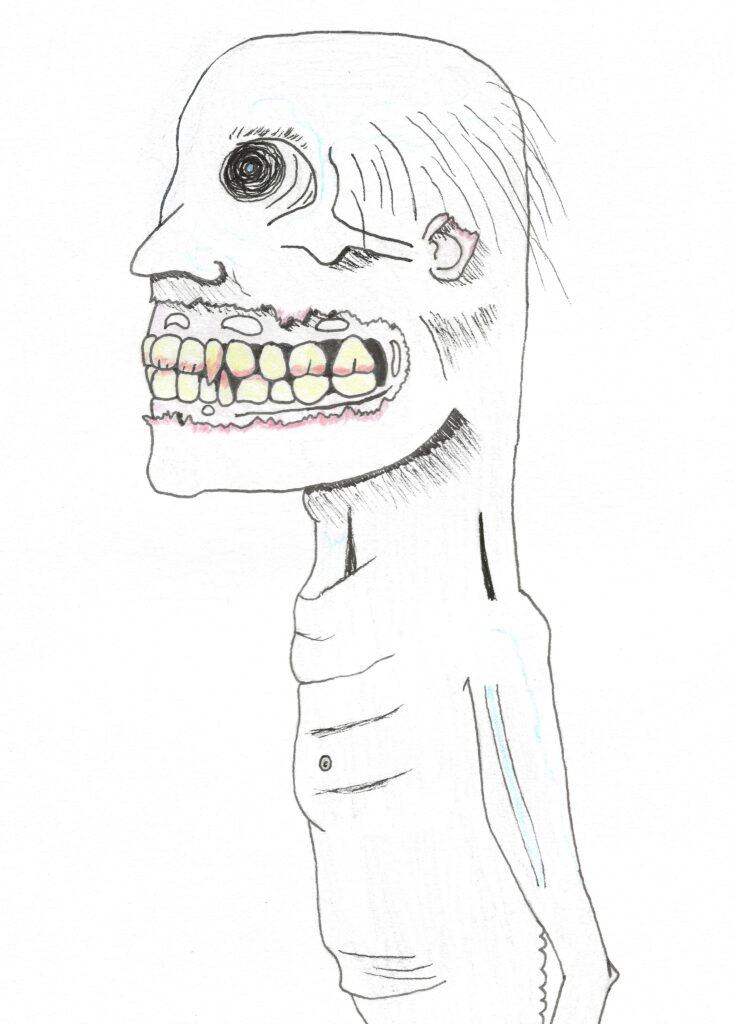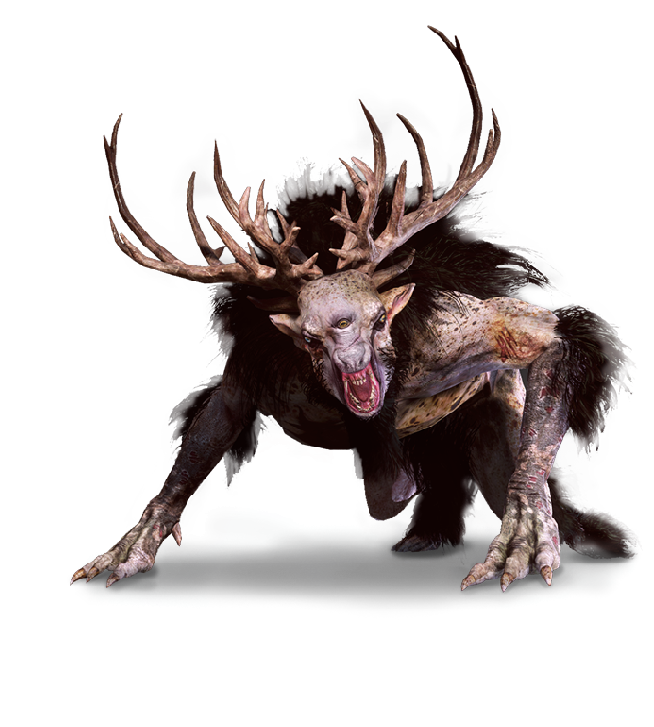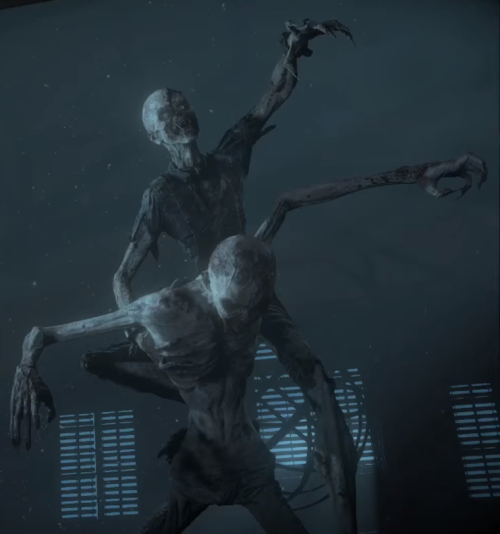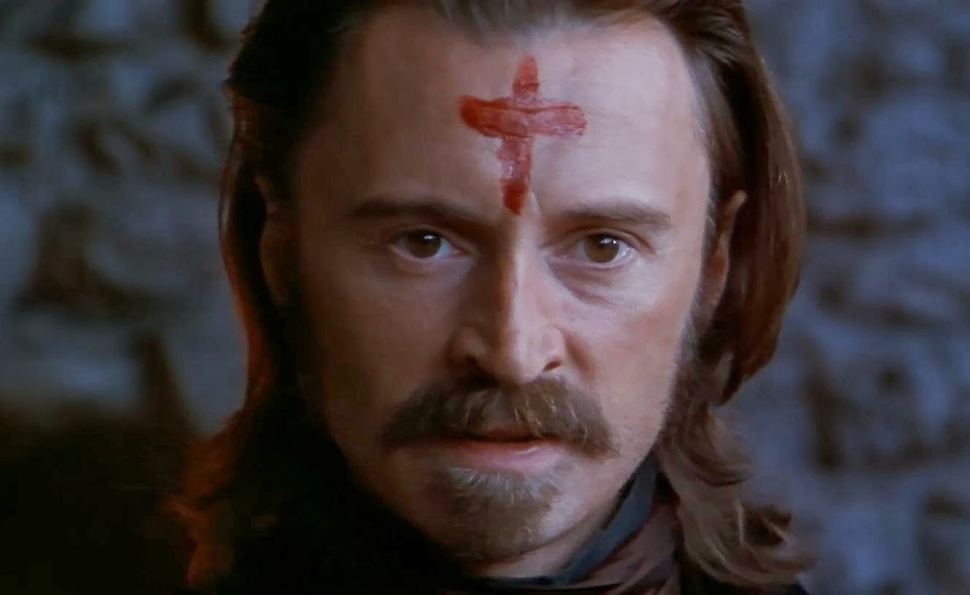
The wendigo has grey skin stretched tight over his bones, what is left of his lips are torn and bloody, and his eyes are set deep in their sockets.
The classic monsters of horror were established long ago. Vampires and werewolves we have seen over and over again in movies, while others like witches and mummies are mostly relegated to Halloween decorations. It’s rare that a new monster becomes popular enough to enter the popular consciousness, appearing in multiple properties within the space of a few years. 1968 brought zombies to the fore, and they haven’t left since. However, more recently there has been a more controversial addition to the great canon of monsters; the wendigo. This has been a good deal more controversial. While most monsters in our popular culture are drawn from European folklore (even zombies act more like European revenants than traditional Hattian zombies) or long-disbelieved myth, wendigos hail from the legends of surviving Native American cultures. Conversations about the ethics of using a spirit that is part of existing belief systems in mass entertainment have spread, and I want to explore them. Is it alright to use the wendigo? What conditions may alter this decision? And how does this effect other popular monsters?
The wendigo features in the myths and folklore of a variety of Native American tribes who mostly live in the Great Lakes region, with the exact details of the creature varying between tribes. It is a creature of cold winter famines, and somebody who ate somebody in the cold winter months might become a wendigo themselves, or be acting under its dark influence. Effectively it is an embodiment of cannibalism itself, a force of destructive hunger aimed towards one’s fellow man. The wendigo served an important role in enforcing taboos against cannibalism, even in the most desperate of times. They are also tied with a psychological disorder called “Wendigo Psychosis“. Primarily affecting the Algonquian tribes that have stories of the wendigo, this disorder often arises in times of famine. Those who suffer from the disorder have cannibalistic impulses that can and have led to violence as they seek a meal. This could be compared to possession in other cultures, a complex psychological issue born of both external factors and internally held spiritual beliefs.

Your average depiction of the Wendigo looks more like a Fiend from Witcher 3 than any actual description from the legends.
This leads to one of the obvious objections many people raise to the use of the wendigo in entertainment. It remains a part of an extant spiritual tradition, one still practiced by living tribe members today. The question that this makes me ask is what makes a wendigo different in this regard from classical Christian demons. The Catholic-style possessing demon driven out by Christ is a staple of horror, from the classic Exorcist to the modern Conjuring series. There is, however, one sharp contrast. These demon-featuring movies portray a Christian worldview as legitimate, where Satan is unambiguously real and Jesus is the only salvation from his presence. The Conjuring series even advertises itself as being based on true stories. There isn’t often a similar respect given to the wendigo.
The very first use of the Wendigo in a story made for non-native audiences I could find was a 1910 story simply entitled “The Wendigo“, and it exemplifies a lack of respect for the traditions it draws from. The wendigo no longer represents cannibalism and famine (it in fact doesn’t eat flesh at all but rather moss) but a terror of untamed nature- a horror alien to the originators of the wendigo legend. It does, honestly, feel like an act of colonialism to take a figure of Native American myth and use it to represent European-American fears, on top of the casual racism the story dabbles in. The creature within the story is the textual version of the deer-headed wendigos you tend to find online; interesting on its own, but definitely not a wendigo.

Two wendigos in Until Dawn.
However, I want to talk about two other stories that use the wendigo, each in a different medium, and explore how different uses may be more or less respectful of the culture that inspired them. First up is Until Dawn, a 2015 video game. As a horror game, Until Dawn enjoys both leaning into and subverting tropes. The story is set up as a traditional slasher, with a masked killer stalking a group of young folks partying in a mountain cabin, but about halfway through, it is revealed that he is actually hunting the wendigos that haunt the mountain. In terms of lore, everything about the Until Dawn wendigos is pretty faithful to the legends they draw from. They are lanky, emaciated humanoids, the result of humans possessed by evil spirits when they resort to cannibalism.
The wendigo of the game also takes on some of the modern connotations of the creature, as one of unchecked greed and the destruction of the environment. The wendigo spirits were unleashed by a rich family’s mining operations on the mountain where they rested. If anything is going to bring wendigos into the mainstream in a way that’s both palatable to a general audience (of horror fans, anyway) and somewhat faithful to their origin, Until Dawn is a good start. However, it isn’t my favorite example of wendigo media, a work that really shines with both what it keeps from legend and the liberties is takes.

Colqhoun, the wendigo.
Ravenous is less a slasher and more a horror/black comedy combination. Set just after the Civil War, a disgraced officer is sent to a remote outpost overseeing the colonization of California. It is there that he meets Colqhoun, who has become a wendigo by killing and eating a Native American guide who told him about the legend. Throughout the movie, this wendigo converts more men into his kind, in particular, army officers. In some regards, the concept of a wendigo seems mangled beyond recognition. Colqhoun remains human in form and mostly in mind, but in one detail he shows his nature. Even those who are converted unwillingly find the craving for human flesh, the source of their new power, irresistible. But thematically, it fits more with the wendigo for all these changes.
The most important detail of Colqhoun’s transformation is that it was entirely willing. He did not commit the taboo of cannibalism out of desperation, but willfully to gain power. While this skirts the tragedy that is possible with the wendigo, it also solidifies the themes of out of control greed and gluttony that the wendigo embodies. The setting of the story, in a time when the USA was redoubling manifest destiny now that the country was unified again, helps this element, as does the fact that the curse is spreading through the upper ranks of the military. The lust for land, for blood, for profit, they all become the same in the wendigo.
Now that it’s become established in the great monster canon, I think we can expect to see wendigos again and again in the decades to come. This could be bad, but I hope I’ve made my case that it doesn’t have to be. If we are lucky, they will become like vampires and werewolves, cultural staples that are always altered, but remain true to a core central theme. However, to achieve this, it shouldn’t just be outsiders making these stories. The descendants of the actual peoples who first told these legends should be involved in ways that they just haven’t before.
